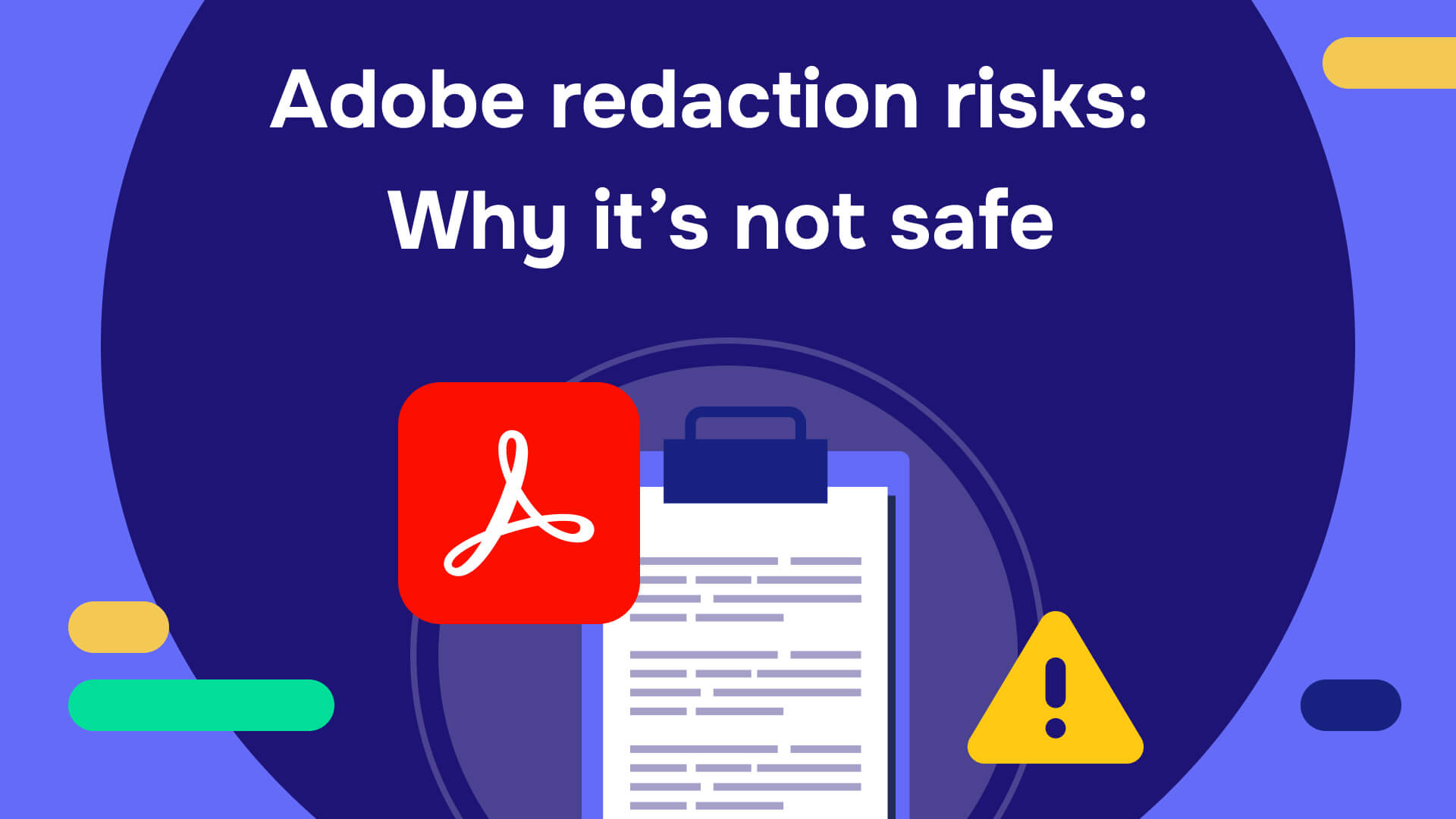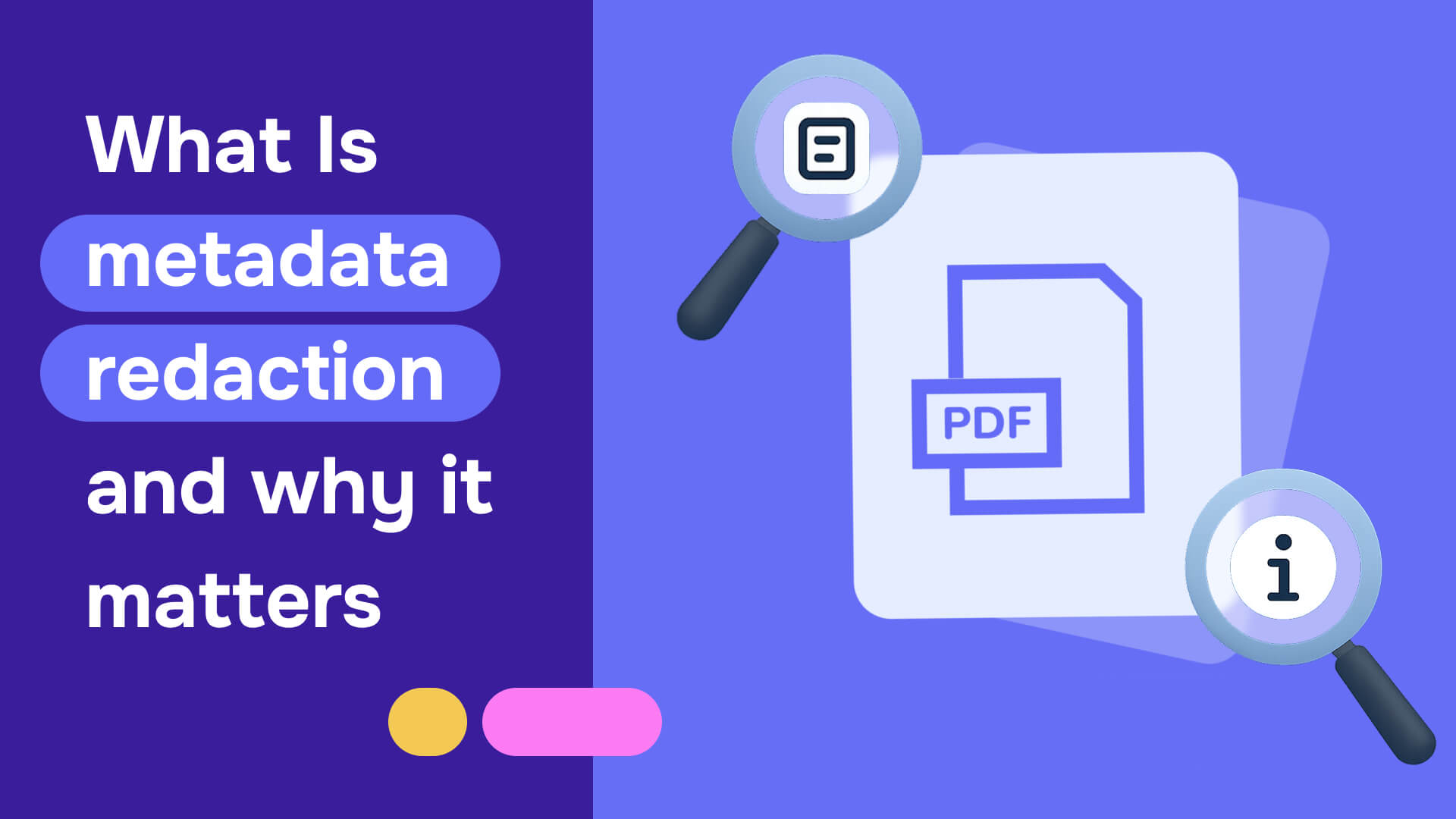Hiring the best candidates is difficult enough without unintentionally limiting your pool of applicants. Unconscious bias in recruitment is a phenomenon that prevents companies from achieving their diversity and inclusion goals, limits innovation, and ultimately harms the bottom line. Blind hiring minimizes unconscious bias and gives all candidates a fair chance. Read on to discover why blind hirin process is important, how to implement it, and how technologies like automated redaction software can help you build a more diverse and inclusive workforce.
What is blind hiring?
Blind hiring is a recruitment process where socio-demographic information is removed from job applications to reduce bias and promote diversity. The redacted information includes immediately visible categories such as race, sex, and disabilities. It also includes less obvious demographic categories, like zip code, and schools attended. These criteria are irrelevant to hiring, and removing them reduces the influence of unconscious bias on the recruitment process.
By focusing solely on qualifications and abilities during evaluation, blind hiring offers all candidates an equal opportunity to showcase their skills. Evaluations measure candidates against predetermined criteria, ensuring fair assessment and selection based solely on merit. Removing this data must be done consistently to keep the blind hiring process effective. Automated redaction software makes it easy to remove all such information, which means that your blind hiring policy will apply equally to all candidates.
Why is blind recruitment important?
Blind recruitment directly contributes to more diverse and equitable hiring practices. This is critical for attracting top talent in a market where 76% of employees and job hunters say diversity is important for deciding on employment offers. It’s also a smart strategy to incorporate into your company’s diversity, equity, and inclusion (DEI) practices. Embracing DEI creates a welcoming environment that values employees’ unique perspectives, backgrounds, and experiences, which fuels innovation and creativity. When employees feel respected for who they are, they are more likely to engage fully in their work and develop a stronger sense of loyalty to the company.
McKinsey finds the most diverse companies are 39 percent more likely to outperform their less diverse counterparts. Teams composed of individuals with different backgrounds and viewpoints are better equipped to tackle complex challenges, generate new ideas, and enhance competitiveness. DEI practices like blind hiring also raise levels of engagement and loyalty and contribute to employee retention.
However, even with DEI initiatives, unconscious bias can be a significant recruiting problem.
What is unconscious bias?
Unconscious bias refers to implicit preferences or prejudices that influence our judgment of others without us necessarily being aware of them. These biases may be linked to characteristics unrelated to job performance, such as ethnicity, gender, and age, and lead us to make hiring decisions and assumptions that are not objective.
Unconscious biases can emerge from seemingly insignificant signals. For example, while someone’s accent does not determine their skill set, accent bias has a strong impact on hiring decisions. Similarly, subtle cues, like names on resumes, can influence call-back rates for interviews, often disadvantaging minority groups.
An effective method for limiting the influence of unconscious bias is to accurately and consistently redact demographic data and other identifying information from resumes, cover letters, and job applications. Removing and protecting sensitive information throughout the hiring process helps minimize the impact of preconceived notions, enriches candidate pools, and encourages hiring decisions based on objective information like skills.
How do you implement blind hiring?
Blind hiring begins with standardization. If your procedure isn’t consistent for every candidate, it isn’t blind hiring. Your blind hiring procedures must adhere strictly to fair employment laws and include training staff on the impact and nature of recruitment bias. There are several steps to take, each with this spirit of fairness and equity in their design.
- Craft Inclusive Job Descriptions
Job descriptions should be inclusive and welcoming to a broad range of applicants. Avoid biases or specific terms that might deter potential candidates; for example, use the singular they to describe candidates to prevent gender bias. Stick to neutral language, focusing on skills rather than years of experience to prevent unintentional racial or age biases.
- Anonymize Resumes and Applications
To minimize opportunities for bias, anonymization should be systemic and carried out the same way for each application. HR departments should agree on what non-essential demographic information to redact and apply it to every resume.
Anonymization can be done in two ways: manual redaction and automated redaction.
Paper documents can be manually redacted using a combination of scissors, tape, markers, and photocopiers. Sensitive information can be cut out, taped over, or blacked out before being copied. This process can work for a small number of documents, but quickly become tedious, time-consuming, and error-prone for larger volumes.
Manual redaction software, like Adobe, can be used for scanned or electronic documents. Its low upfront cost makes it a good option for small-scale operations. However, it’s a laborious process, may leave metadata untouched, and can lead to redaction failures when not done correctly.
On the other hand, AI-powered redaction software streamlines the process of removing identifying information from resumes. Automated redaction comes with many advantages. It’s more efficient in time and effort, scalable for high volumes, and reduces human error. Sensitive data and metadata are securely handled, and the output is consistent and accurate. It allows HR to focus on the actual hiring process instead of spending time redacting information. Automated redaction also means that a minimal number of people will see the candidates’ demographic data, making the blind hiring process more effective.
- Focus on Skills and Relevant Data
Resumes include information that can induce unconscious bias, such as names of educational institutions and attendance dates. Redacting this data creates a resume that allows your interviewers to focus on the candidate’s experience, qualifications, and skills. To assess a candidate’s personality and soft skills anonymously, you can use pre-employment assessments and challenge statements. These will provide a more accurate understanding of what the candidate will be like on the job than assumptions tinged with unconscious bias.
- Anonymize Initial Interviews
While recruiters will see unredacted resumes, the interview team must not. Before passing them any resumes, use redaction software to remove identifying information. You can further anonymize initial interviews by using technological solutions such as email Q&As, live chat features, voice-masking technology, and automated AI interviewers.
- Use Work Hypotheticals and Structured Interviews
Your interview team should strive to assess candidate skills as holistically as possible. One way to accomplish this is to use hypothetical work situations to how the candidate may perform in the role. Turning parts of the job into tasks or questions allows candidates to demonstrate their skills directly.
Using a structured interview approach where all candidates are asked the same questions also helps create fair comparisons between candidates. These interviews should be scored with set criteria. A diverse panel of three (or more) reviewers can also help reduce bias further and ensure a fair evaluation.
Choose redactable to ensure a blind hiring process
Blind hiring doesn’t have to be complicated to be effective, and even simple measures help reduce bias. Redacting non-essential information creates a diverse candidate pool and more equitable employment opportunities.
Redactable’s automated redaction software minimizes the impact of bias and human error by removing all personal details from resumes and job applications and fully deleting both sensitive candidate information and metadata instead of simply masking them. With Redactable, you can be assured that your company complies with equal employment, data protection, and privacy requirements.
Redactable also:
- Ensures documents are secure against data theft or manipulation.
- Generates redaction certificates detailing time and author of redactions.
- Offers one-click redaction for quick document processing - 2.5 minutes for a 10-page document.
- Supports importing documents from Google Drive, Dropbox, OneDrive, and Box.
It’s the simplest solution for information privacy needs in sectors like HR, Recruitment, Legal, Finance, Real Estate, Insurance, Healthcare, and Government. Learn more about Redactable by trying it for free.







